Piedra del Peñol
( El Peñón de Guatapé )The Rock of Guatapé (Spanish: El Peñón de Guatapé) (Tahamí language: Mojarrá) is a landmark inselberg in Colombia. It is located in the town and municipality of Guatapé, Antioquia. It is also known as The Stone of El Peñol, or simply La Piedra or El Peñol (La Piedra de El Peñol), as the town of El Peñol, which borders Guatapé, has also historically claimed the rock as their own and thus has led to different names for the site.
The landform is a granitic rock remnant that has r...Read more
The Rock of Guatapé (Spanish: El Peñón de Guatapé) (Tahamí language: Mojarrá) is a landmark inselberg in Colombia. It is located in the town and municipality of Guatapé, Antioquia. It is also known as The Stone of El Peñol, or simply La Piedra or El Peñol (La Piedra de El Peñol), as the town of El Peñol, which borders Guatapé, has also historically claimed the rock as their own and thus has led to different names for the site.
The landform is a granitic rock remnant that has resisted weathering and erosion, likely as result of being less fractured than the surrounding bedrock. The Peñón de Guatapé is an outcrop of the Antioquia Batholith and towers up to 200 meters (656 feet) above its base. Visitors can scale the rock via a staircase with 708 steps built into one side. There is an entrance fee of Col$25,000 in order to climb to the top of the rock.
Near the base of the Rock, there are food and market stalls for shopping. The entire area where the rock is located contains many photo opportunities for visitors. Colorful murals of the rock painted by local artists decorate the insides of the restaurants and stores. A VIP area includes signs where tourists can take pictures with the name of the town and La Piedra behind it. A bronze statue of Luis Eduardo Villegas López sits at the bottom of the rock. The statue was made by sculptor Mario Hernández C. to honor López as the first to climb to the top of the rock. The sculpture was installed on February 25, 2008. About halfway up the stairs, there is a shrine to the Virgin Mary. The summit contains a three-story viewpoint tower, a convenience store, and a seating area. The top of the rock is surrounded by a railing that contains zocalos. Right outside of La Piedra visitors can book helicopter tours that will fly around the rock.
According to geologists, the rock is approximately 65 million years old. The indigenous Tahamí, former inhabitants of this region, worshiped the rock and called it in their language mojarrá or mujará (meaning 'rock' or 'stone').
The rock was first officially climbed in July 16, 1954, when Luis Eduardo Villegas López, Pedro Nel Ramírez, and Ramón Díaz climbed the rock in a five-day endeavor, using sticks that were fixed against the rock's wall.[1] López purchased the rock from local farmers that viewed the land as useless for farming. He built stairs into a crack of the rock and began to charge people to climb the steps. He is known as the owner of La Piedra and the Villegas family continues to earn money because of his actions.
A new species of plant, named Pitcairnia heterophylla by a German scientist, was found on the top of the rock.
A viewing spot was built on top of the rock, where it is possible to acquire handicrafts, postcards, and other local goods. There are vendors that sell fresh fruit and beverages. It is possible to see the 500 km shore-perimeter dam. There are 708 steps to the uppermost step atop the building at the summit, a fact reinforced by blue numbers also seen in the climb up the stairs.
In the 1940s, the Colombian government declared it a National Monument.[2]
Graffiti Side with graffiti
Side with graffitiOn the western face of the stone there are painted large white letters "G" and an incomplete "U" (only the single vertical stroke was completed, resembling an "I"). The towns of Guatapé and El Peñol had long disputed ownership of the rock, and the residents of Guatapé decided to settle the matter by painting the town's name on the rock in huge white letters. It did not take long for the residents of El Peñol to notice the work, and a large mob was assembled to stop it, leaving behind the unfinished graffiti.
 A mural in La Plazoleta that tells a story once believed by locals about where La Piedra came from.
A mural in La Plazoleta that tells a story once believed by locals about where La Piedra came from.The entrance to La Plazoleta features a mural of La Piedra floating and a spaceman with the words, "¡Nos están dejando!". Locals once believed that the rock came from aliens.

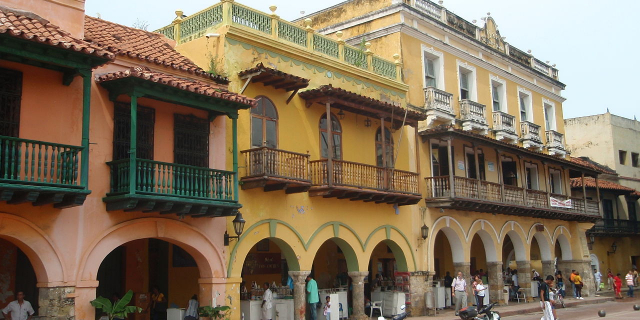

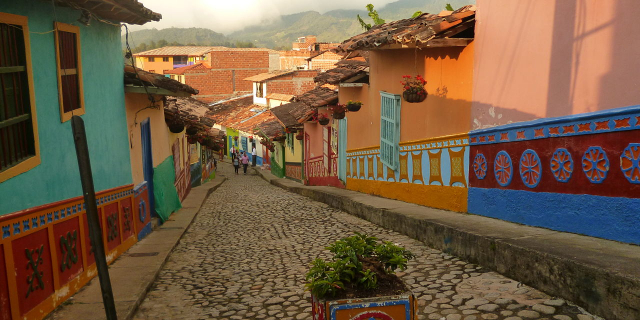









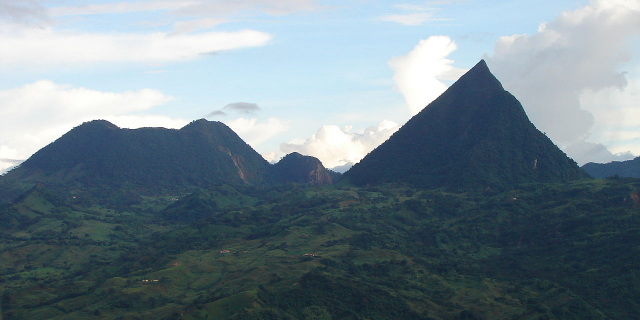

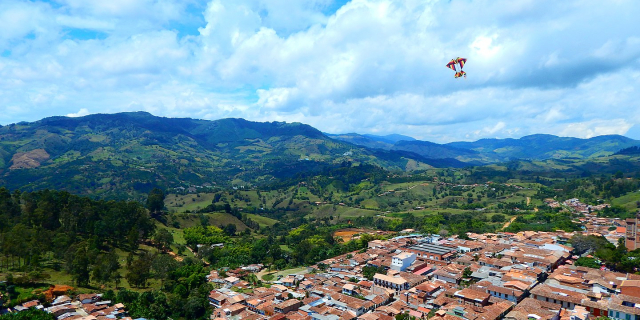
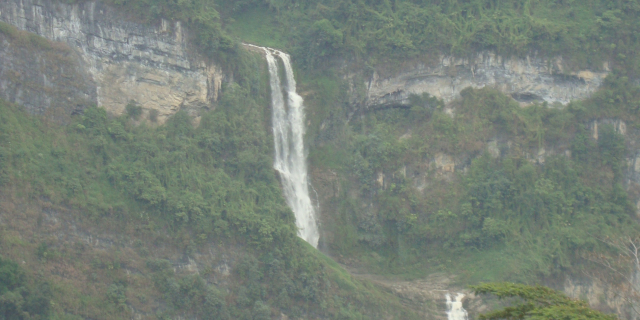

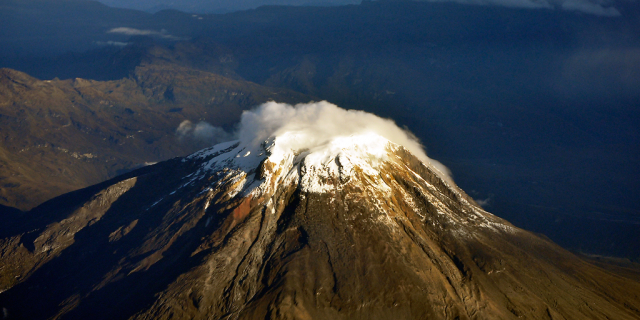
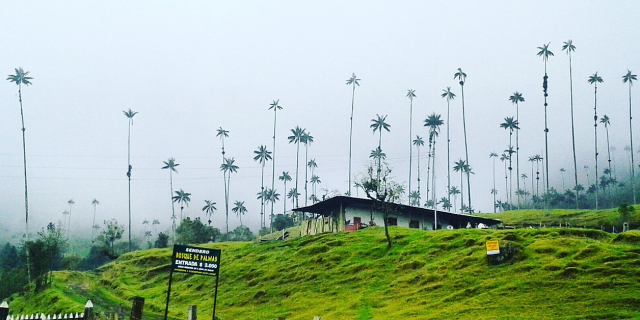

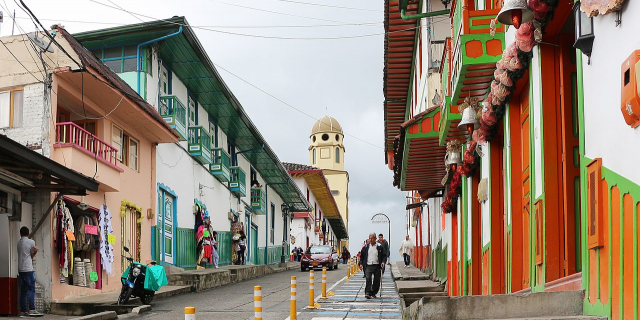


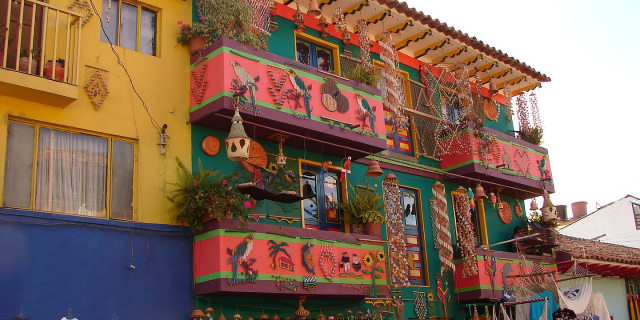
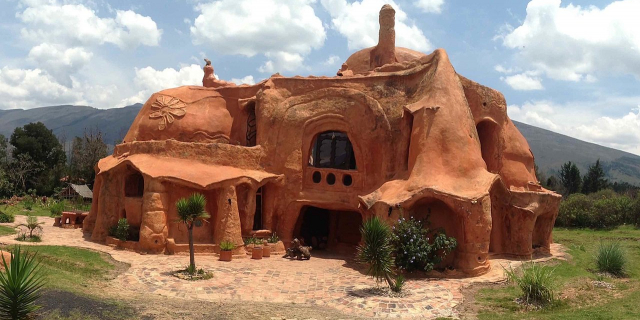

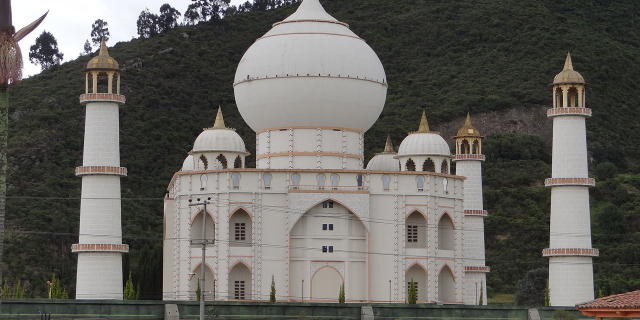

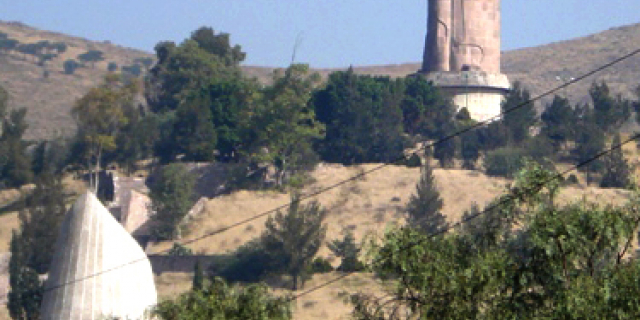

Add new comment